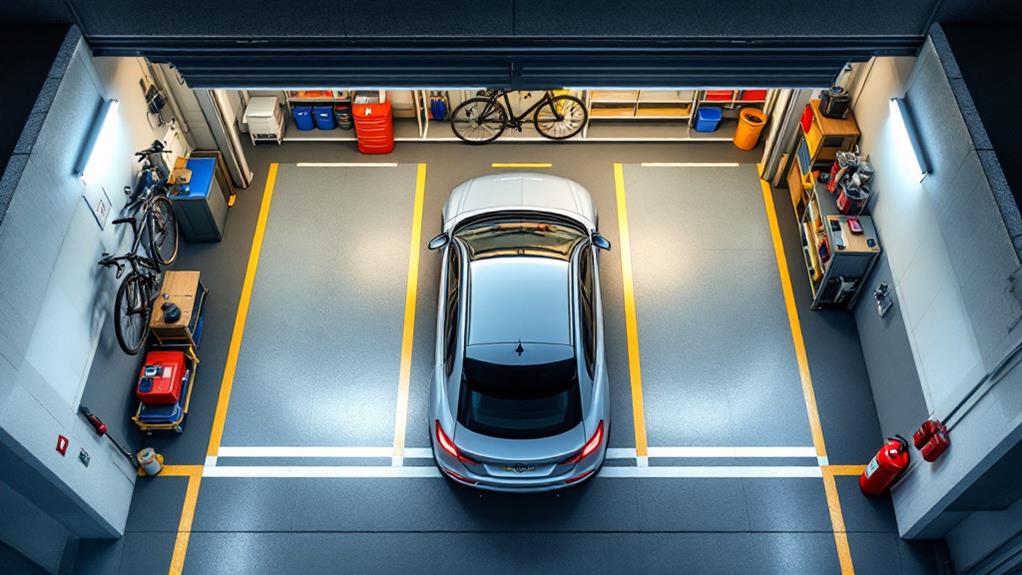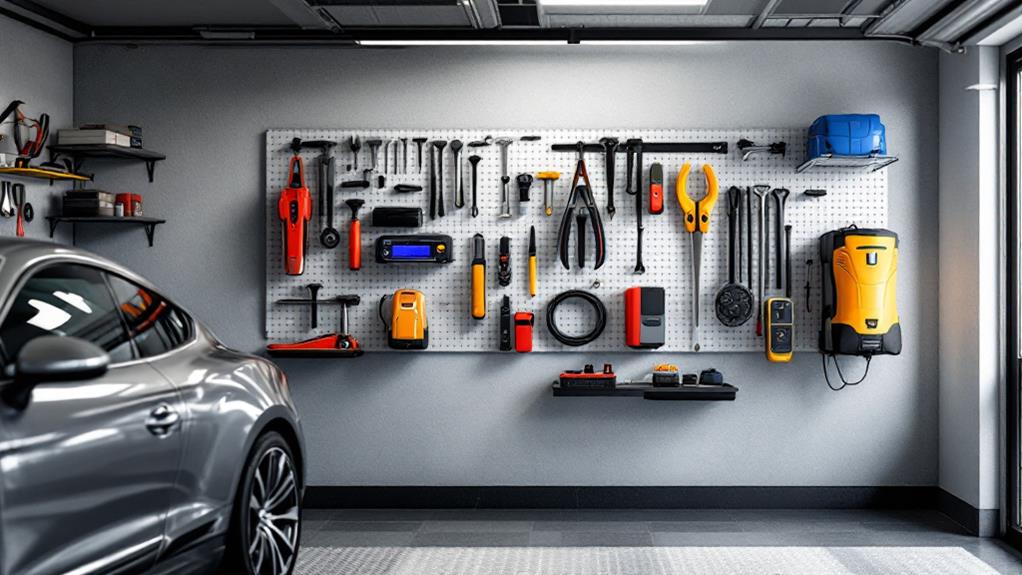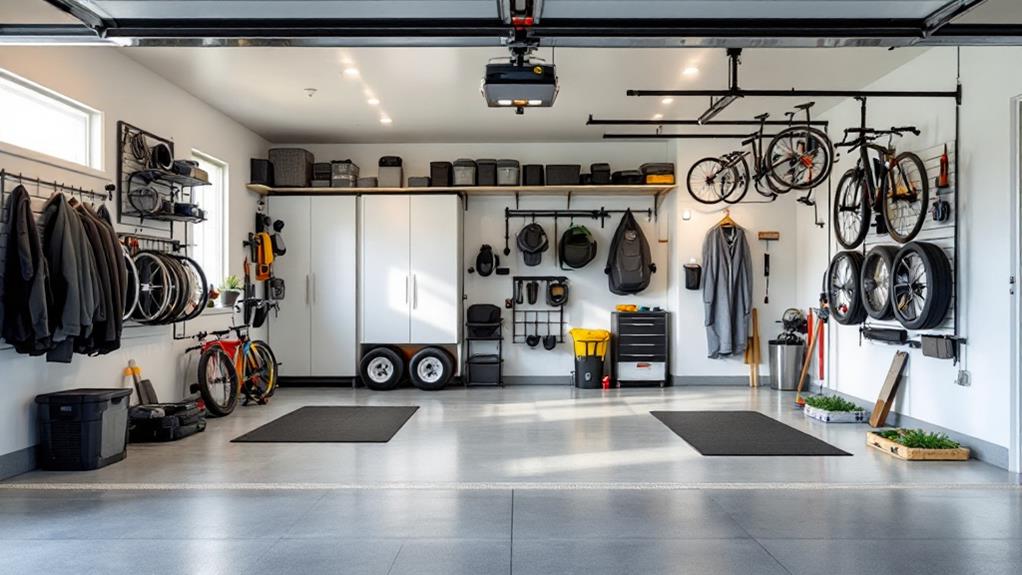Parking Safety Tips for Families With Small Children at Home
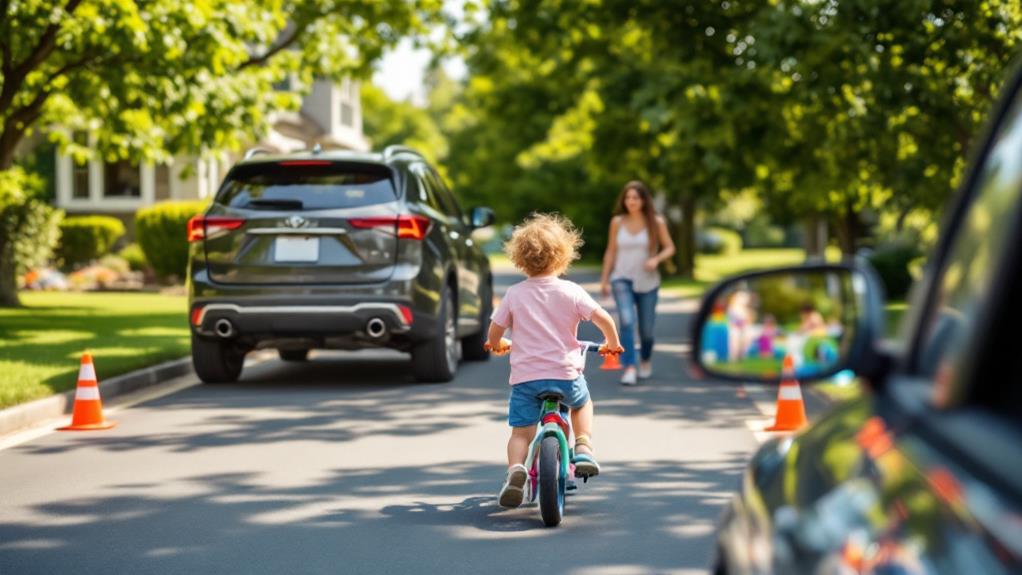
When parking with small children, stay vigilant in these high-risk areas. Choose well-lit spots, avoid distractions, and teach kids defensive walking techniques. Stick to main aisles and use designated walkways to maximize visibility. Before exiting your vehicle, have keys ready and keep everyone inside until you're prepared. Secure children first when leaving the car. Implement the STAR method (Stop, Touch, Attention, Ready) to develop hazard awareness skills. Establish clear safety rules and practice them regularly in various scenarios. By following these tips, you'll create a safer parking experience for your family. There's much more to learn about protecting your little ones in parking lots.
Stay Alert in Parking Areas
In parking areas, vigilance is crucial for families with small children. Safety should be your top priority, as parking lots are high-risk zones where two-thirds of drivers are distracted and unaware of their surroundings. Don't assume drivers will notice or slow down for pedestrians, especially when they're with young children.
To guarantee your family's safety, avoid distractions like phone calls or headphones when walking through parking lots. Choose well-lit, visible areas to park, making it easier for both you and other drivers to see each other. When walking, prioritize visibility by avoiding paths between cars or areas with blind corners.
Remember that drivers in parking lots often feel more comfortable multitasking, increasing the risk of collisions with pedestrians. Always expect drivers to be distracted and be prepared to react quickly. Hold your children's hands and keep them close to you while walking. Teach them to look both ways before crossing, even in parking lots.
Practice Defensive Walking Techniques
Three key defensive walking techniques can substantially enhance your family's safety in parking areas. First, always assume drivers aren't paying attention. With two-thirds of motorists likely distracted, it's essential to stay vigilant and make eye contact before crossing. Second, stick to main aisles when possible. By avoiding the narrow spaces between parked cars, you'll increase your visibility to drivers and reduce the risk of sudden encounters.
Finally, be proactive in identifying potential hazards. Watch for blind corners, one-way traffic, and trip hazards like debris or ice. These dangers can catch you off guard if you're not actively looking for them.
To stay safe in parking lots, teach your children these defensive walking techniques. Explain why it's important to remain alert and demonstrate how to traverse safely. Encourage them to hold hands with adults and stay close to the family group. By practicing these habits consistently, you'll instill valuable parking lot safety skills that will protect your family for years to come. Remember, your safety is in your hands – don't rely on drivers to notice or yield to you. Always prioritize caution and awareness when walking through parking areas with your children.
Choose Safe Routes

When it comes to choosing safe routes in parking areas, strategic planning can substantially reduce risks for families with young children. The National Highway Traffic Safety Administration emphasizes the importance of parking lot safety, as these areas can be particularly hazardous for pedestrians, especially children. To guarantee your family's safety, you'll want to select paths that maximize visibility and minimize exposure to moving vehicles.
- Stick to main aisles: Walk along the primary lanes to maintain distance from moving traffic.
- Avoid cutting between cars: Don't take shortcuts through parking spaces or between vehicles.
- Use designated walkways: Leverage pedestrian paths when available for added protection.
- Stay visible: Choose routes that keep you and your children in clear sight of other drivers.
Prepare Before Exiting Vehicle
Getting ready before you leave your vehicle can make a world of difference in parking lot safety. Before you even reach your destination, have your keys ready in hand. This simple step minimizes the time you'll spend outside the car, reducing potential risks. Once parked, guarantee everyone remains inside until you're prepared to exit. This practice keeps your children safe and allows you to assess the surroundings.
When choosing a parking spot, aim for areas near cart returns. This strategy reduces the distance you'll need to walk through the lot with your little ones. Inside your vehicle, maintain an organized space. A tidy car expedites the process of loading and unloading children and belongings, limiting your exposure time in the parking area.
Secure Children First

Once you've prepared for a safe exit, your top priority should be securing your children. Putting their safety first is essential when arriving at or departing from your vehicle. Develop good safety habits by always loading your children into the car before packing other items. This guarantees they're secure and not left unattended in a potentially dangerous parking area.
When it's time to get your children into the vehicle, make sure their car seats and seatbelts are ready beforehand. This reduces the time they're exposed to potential hazards in the parking area. Keep your children in the vehicle until you're ready to exit with them, minimizing their time in vulnerable situations.
- Prepare car seats and seatbelts before children enter the vehicle
- Load children into the car first, before other items
- Keep children inside the vehicle until you're ready to exit with them
- Prioritize children's safety over convenience when entering and exiting
Implement the STAR Method
To enhance your family's parking lot safety, implement the STAR method with your children. This simple yet effective approach teaches kids to Stop, Touch, Attention, and Ready when entering or exiting vehicles in parking lots. By following these steps, you'll prioritize safety and help your children develop indispensable hazard-awareness skills.
When you arrive at or depart from a parking lot, encourage your kids to stand still, keep a hand on a designated area of the vehicle, look around for potential risks, and listen for any warnings. Wait for your instruction before allowing them to move. This method establishes clear rules and expectations for pedestrian behavior in potentially dangerous environments.
Make the STAR method a habit by consistently practicing it with your children. Incorporate it into your family's parking lot routine to reinforce the importance of following safety protocols. By teaching and enforcing this approach, you'll empower your kids to take an active role in their own safety. The STAR method helps children develop critical skills for maneuvering parking lots safely, reducing the risk of accidents and injuries in these high-traffic areas.
Establish Clear Safety Rules
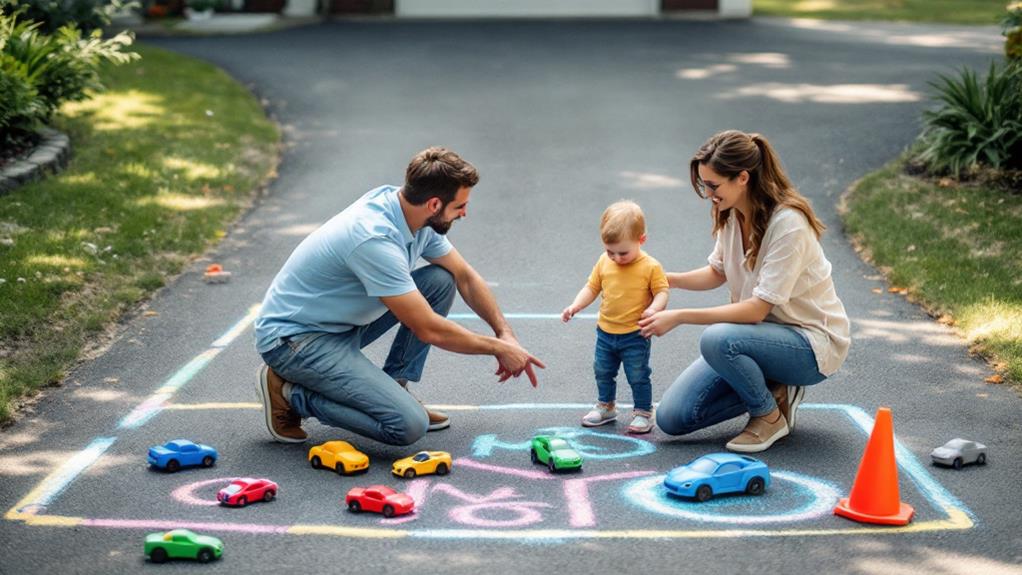
Building on the STAR method, it's important to establish a thorough set of clear safety rules for your family in parking lots. Make sure these rules are simple, easy to remember, and consistently enforced. Start by setting clear expectations for behavior in parking lots and driveways, such as holding hands, walking instead of running, and looking both ways before crossing.
To effectively implement these rules, consider the following steps:
- Regularly practice the rules with your children in various parking lot scenarios
- Use positive reinforcement to encourage compliance and good behavior
- Involve your children in the safety process by asking them to identify potential hazards
- Adapt your safety strategies as your children grow and develop their risk awareness
Remember to reinforce these rules through repetition and lead by example. When you're consistent in following the rules yourself, your children are more likely to internalize them. As your children grow, you can gradually give them more responsibility in the safety process, but always maintain clear guidelines for parking lot behavior. By establishing and consistently enforcing clear safety rules, you'll help protect your family from potential dangers in parking lots and driveways.
